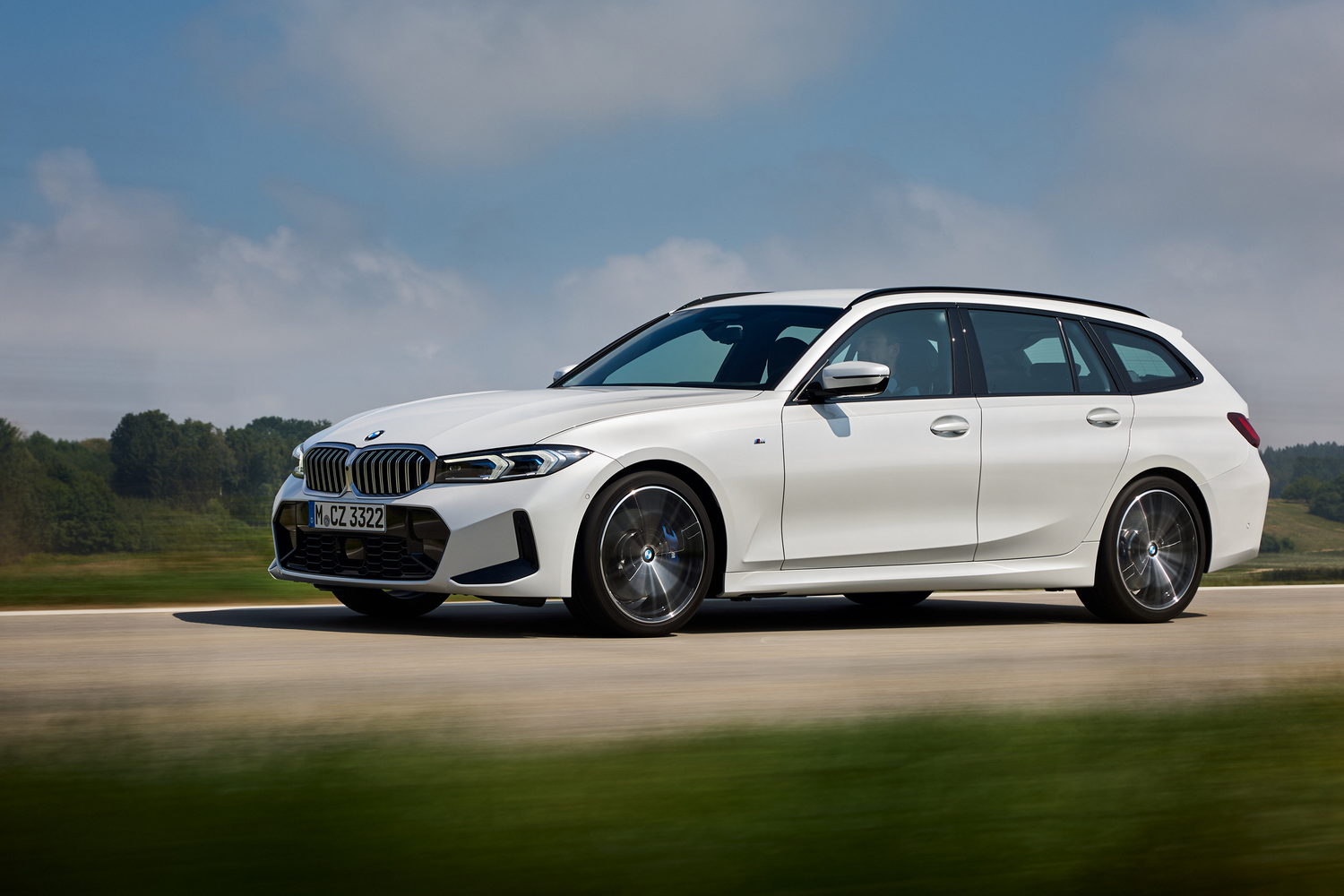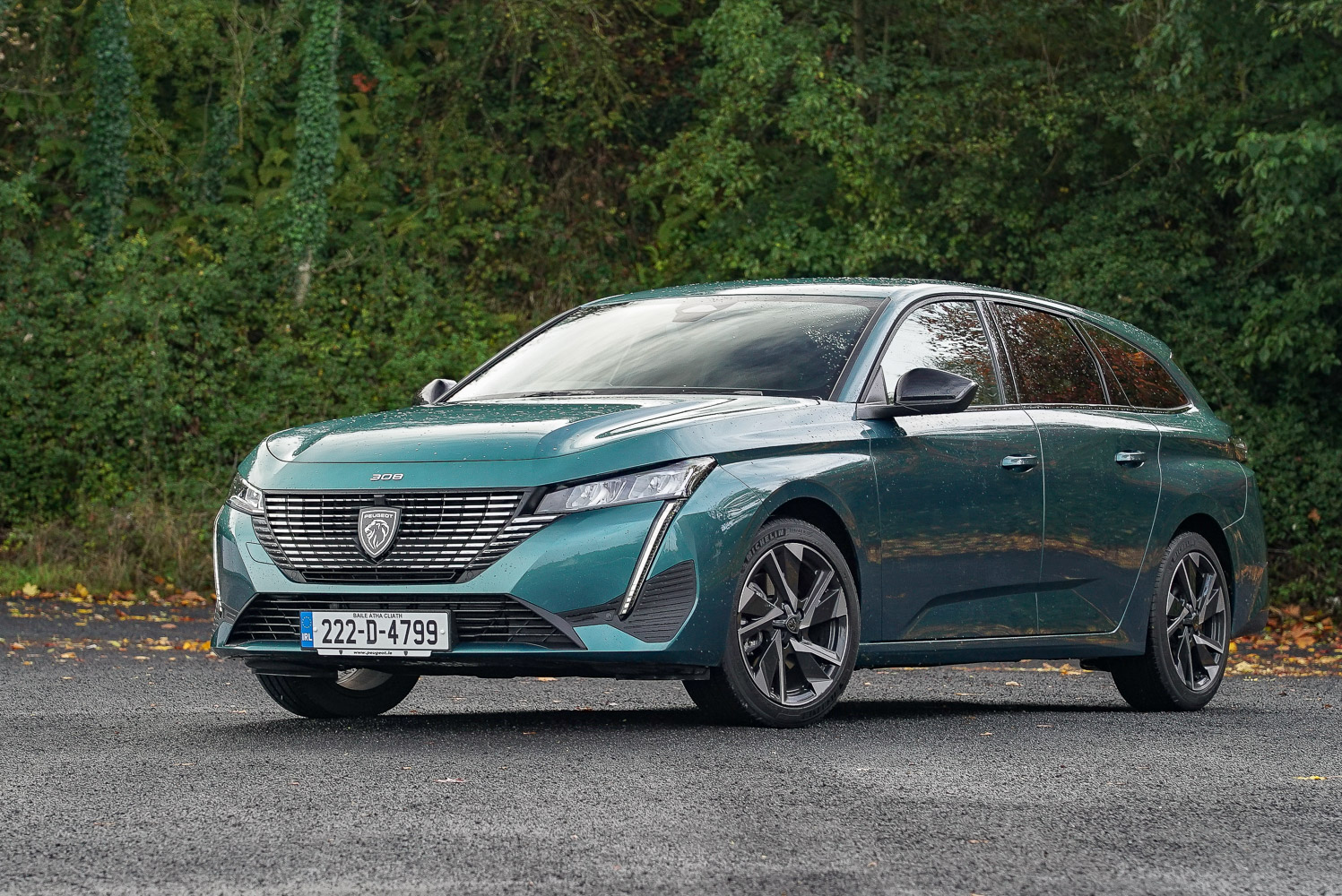Skoda has updated its big-selling, fourth-generation Octavia model, giving it subtly massaged looks, a greater level of in-car technology and a simplified engine range. The resulting vehicle is still one of the strongest machines in its class, but while many will prefer the petrol Fastback, is there still a place in the world for an Octavia Combi estate fitted with a turbodiesel engine?
In the metal

Like any facelifted fourth-gen Octavia, the Combi gets revised LED lamp clusters fore and aft, the former of these with downward-pointing signatures for the daytime running lights that mimic, and indeed frame, the outer lines of the ‘octagonal’ radiator grille which is Skoda’s trademark corporate centrepiece. Discreet changes to the bumpers, plus a selection of new alloy wheel designs and body colours, round out a modest aesthetic update that, in truth, had little or next-to-no work to do when it comes to providing the Octavia with plenty of kerb appeal. This is a great-looking car in any specification, proportionally just so and blessed with lovely, crisp, clean lines, and that’s particularly true of the elegant Combi wagon in the racier Sportline spec - which means black body detailing, an enhanced lower body kit and big set of 18-inch alloys that remind you of the ones fitted to the RS high-performance model.
Inside, the 'Selection Box' specification of the Octavia Combi benefits from the latest infotainment system from Skoda, presented on a large 13-inch floating touchscreen in the centre of the dash. Other models - including the standard Sportline - use a 10.4-inch item; you can upgrade to the newer set-up for €1,365 as part of a tech bundle. There’s a 10.25-inch digital instrument cluster on all new Octavias, too, while the smartphone charging pad is uprated to a 15-watt item that cools your device down as it takes in charge wirelessly. Later in the year, Skoda will augment the in-car ‘Laura’ voice assistant function with ChatGPT AI, so this is an Octavia at the cutting edge of current human-machine interfaces.

Otherwise, the overriding fit and finish, and quality of materials used throughout, is exemplary, while there are loads of Skoda’s ‘Simply Clever’ touches to make life onboard the Octavia as simple and straightforward as it can possible be. About our only gripe is that it’s a shame so much of the in-car functionality is routed through the new touchscreen, with a distinct lack of switchgear up front (there’s a bank of shortcut buttons above the central air vents, but that’s pretty much your lot), yet in general everything works well and is laid out intuitively.
Oh, and we almost needn’t say this, but both cabin and boot space are ginormous. Those sitting in the second row have loads of legroom to luxuriate in, provided they’re not in the centre position with its raised floor for the transmission tunnel, while at the back the cargo bay holds a colossal 640 litres with all seats occupied, rising to 1,700 litres with the second row folded away.

Driving it
With all petrol models in the updated Octavia line currently powered by a 1.5-litre TSI four-cylinder unit (mild-hybrid-equipped if it’s an auto), there’s slightly less choice - and no electrical augmentation at all - over on the diesel side of the Skoda’s range. This familiar 2.0-litre four-cylinder TDI engine does all the work, producing 116hp/300Nm and paired with a six-speed manual in base spec, or with more potent outputs of 150hp/360Nm and a seven-speed DSG auto as standard, which is what we’ve tested here.
And while it might be unfashionable of us to say it these days, given diesel is slowly dying out, we’re of the opinion that this 2.0-litre diesel is the perfect companion for the Octavia’s particular set of skills. OK, so it has a few more background vibrations than the 1.5 TSI petrol engine, which you’ll discern through the wheel and the base of the seat, and you could argue it is louder at lower revs than the petrol alternative as well.

Yet the noises the 2.0 TDI make are never intrusive or strained, and you simply can’t overlook the additional 110Nm the turbodiesel has when it comes to peak torque. Thus, while their on-paper performance figures are broadly comparable, to drive the 2.0 TDI 150 is even more relaxing and enjoyable in all circumstances than the petrol equivalent. With the ultra-slick DSG auto ensuring you keep in the engine’s sweet spot more of the time, therefore serving up great gobs of flexibility in response to even the demurest of accelerator inputs, it just feels so much more muscular and effortless to drive.
Better yet, you get real-world economy gains that are just, well, superior in the TDI than they are in any of the 1.5 TSIs. We drove four Octavias on the launch event, three of which were 1.5 TSIs. In similar driving situations as this TDI, the best of them used 5.9 litres/100km, which is perfectly acceptable, but the 2.0 TDI Sportline easily achieved 5.1 litres/100km.
And as a Sportline, on its large alloys with low-profile tyres and fitted with 15mm-lower sports suspension, it was every bit as sweet to drive as the cars on smaller wheels, running loftier and softer springs. Just like the petrol Octavias, this TDI Combi glides along on even the worst road surfaces, its damping beautifully isolating its occupants from any occasions where the alloys might thump through sizeable imperfections in the tarmac and summoning up an incredible level of refinement when moving at motorway speeds as well.

OK, like the petrol variant the TDI also doesn’t have the chops to be classified as some kind of revelatory handling experience just waiting to be unearthed, but it controls itself smartly enough in the corners to make the all-round dynamic display much better than just average. This is a superb drivetrain in a truly excellent midsized estate car.
What you get for your money

There’s a new trim hierarchy in Ireland for the facelifted Skoda Octavia, which runs Selection, Selection +, Selection Box and then Sportline, with the RS flagship still to come in the updated range. However, even base variants have plenty of equipment as standard, while this Sportline majors on the aesthetics. On the outside, there are black 18-inch ‘Vega’ aerodynamic alloy wheels, Matrix LED headlights and the Sportline styling pack (black detailing, 15mm-lower suspension, privacy glass). Inside, front sport seats in fabric and leatherette are complemented by a grey-stitched black dashboard with Piano Black inserts, aluminium pedals and door sills, and the different three-spoke steering wheel with shift paddles. Additional equipment includes full keyless entry and go, heated front seats and the drive mode select functionality, and while a Sportline Combi starts at a fairly reasonable €42,590 for the 150hp TSI petrol, watch out for this 2.0 TDI if you’re counting the cents - it’s the most expensive standard model so far at €47,350.
Summary

Neither estate cars nor turbodiesel engines are the talk of the town in Ireland these days, but melded together in this Skoda Octavia 2.0 TDI Combi Sportline, they’re a match made in heaven. Admittedly, it’s pretty pricey in this particular specification, but if you want an everyday car that’s the height of practicality and comfort, with a good degree of technology, handsome looks and a super-smooth, economical powertrain all thrown in, you’re not going to do much better than this slice of Czech magnificence.































